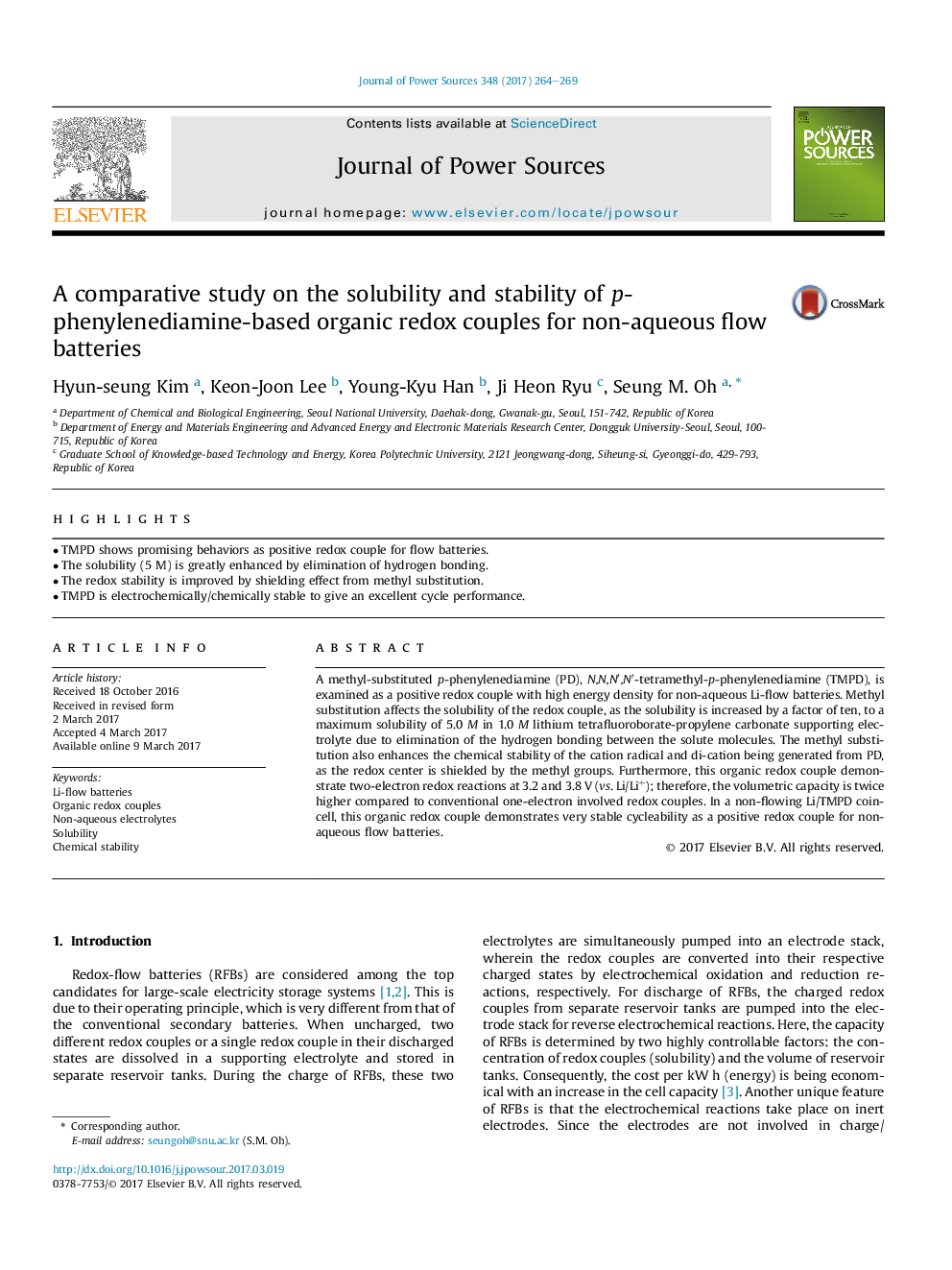| Article ID | Journal | Published Year | Pages | File Type |
|---|---|---|---|---|
| 5149498 | Journal of Power Sources | 2017 | 6 Pages |
Abstract
A methyl-substituted p-phenylenediamine (PD), N,N,Nâ²,Nâ²-tetramethyl-p-phenylenediamine (TMPD), is examined as a positive redox couple with high energy density for non-aqueous Li-flow batteries. Methyl substitution affects the solubility of the redox couple, as the solubility is increased by a factor of ten, to a maximum solubility of 5.0Â M in 1.0 M lithium tetrafluoroborate-propylene carbonate supporting electrolyte due to elimination of the hydrogen bonding between the solute molecules. The methyl substitution also enhances the chemical stability of the cation radical and di-cation being generated from PD, as the redox center is shielded by the methyl groups. Furthermore, this organic redox couple demonstrate two-electron redox reactions at 3.2 and 3.8Â V (vs. Li/Li+); therefore, the volumetric capacity is twice higher compared to conventional one-electron involved redox couples. In a non-flowing Li/TMPD coin-cell, this organic redox couple demonstrates very stable cycleability as a positive redox couple for non-aqueous flow batteries.
Related Topics
Physical Sciences and Engineering
Chemistry
Electrochemistry
Authors
Hyun-seung Kim, Keon-Joon Lee, Young-Kyu Han, Ji Heon Ryu, Seung M. Oh,
